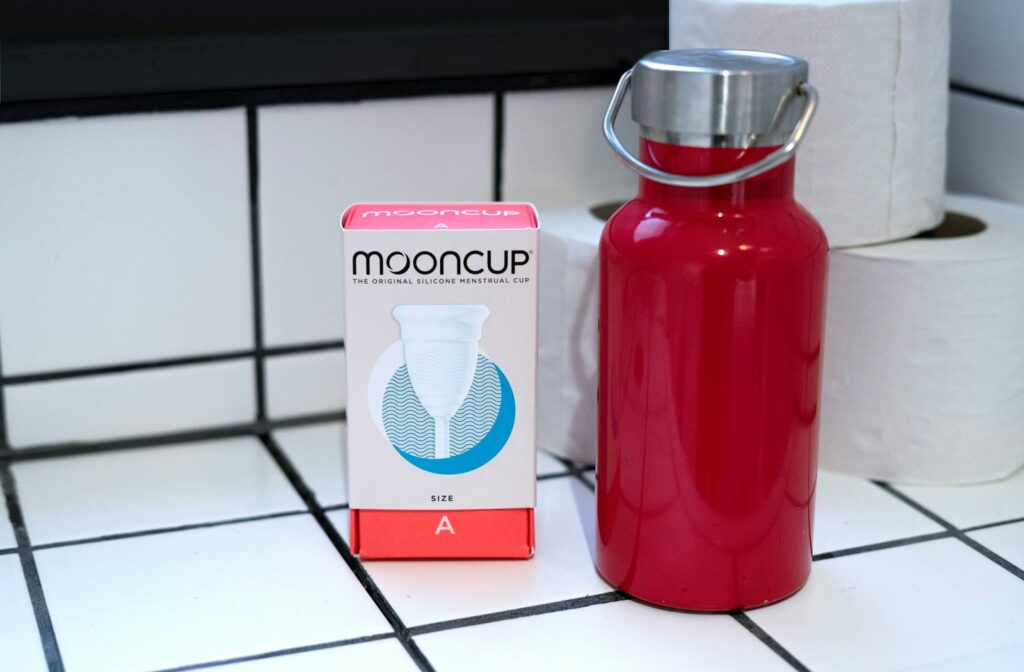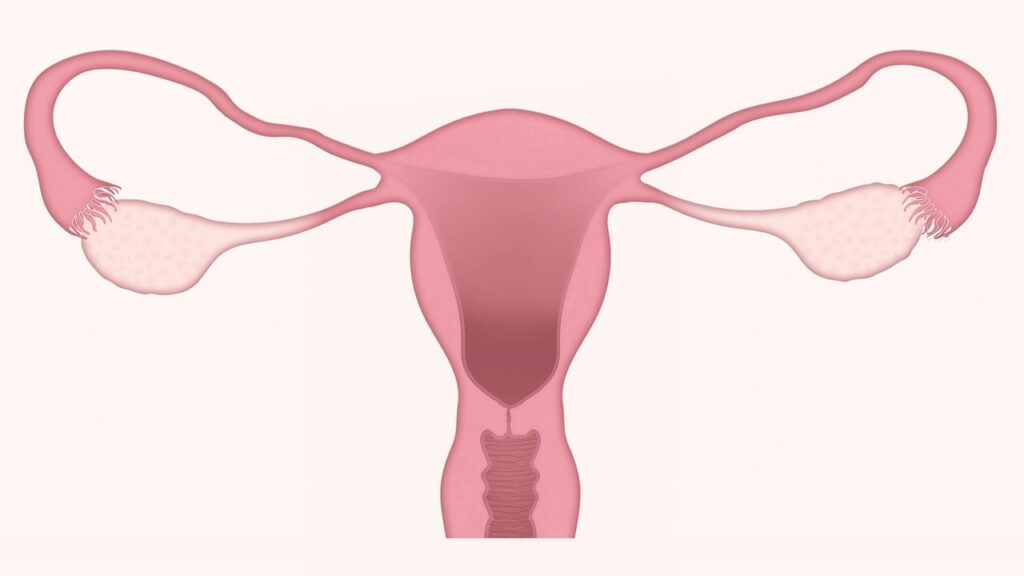
Menstruation. The word itself often conjures a mix of understanding, discomfort, and, for many, a surprising amount of misinformation. Despite being a regular biological process affecting billions worldwide, it remains shrouded in cultural taboos, historical inaccuracies, and common misconceptions. From its very definition to the nuances of its symptoms and societal impact, the journey of menstruation is far more complex and varied than many narratives, fictional or otherwise, often portray. It’s high time we pulled back the curtain on these enduring myths and dive deep into the science and reality.
In an age where information is at our fingertips, it’s astonishing how many fundamental aspects of the menstrual cycle are still ‘gotten wrong,’ not just in period dramas, but in everyday understanding. This isn’t just about anatomical details; it touches on personal health, social equity, and even historical interpretations that often overlook the lived experiences of menstruating individuals. We’re here to unpack some of the most pervasive inaccuracies and overlooked truths, offering a definitive guide to what you truly need to know.
Prepare to challenge assumptions as we dissect the intricacies of the human menstrual cycle. We’ll explore everything from the actual length and variability of a ‘normal’ period to the surprising composition of menstrual fluid, and the critical distinctions between common discomforts and serious disorders. Get ready for an in-depth exploration that promises to enlighten and empower, setting the record straight on a topic that deserves clarity and accurate understanding.
1. **Menarche and Cycle Length: Dispelling the ‘Perfect’ 28-Day Myth**The onset of the first menstrual period, a significant developmental milestone known as menarche, typically signals the beginning of reproductive years. This pivotal event usually begins during puberty, somewhere between the ages of 11 and 13, though it is considered entirely normal for menarche to occur as early as 8 years of age. Interestingly, research indicates that the average age of the first period tends to be later in the developing world compared to the developed world, with the average age in the United States remaining largely unchanged since the 1950s. This early variability is a natural part of pubertal development, highlighting that there isn’t a single ‘correct’ age for menarche to occur.
Beyond menarche, one of the most persistent myths surrounding menstruation is the idea of a universally ‘perfect’ 28-day cycle. While conventionally cited as the average, this figure often misleads individuals into believing any deviation is abnormal. The typical length of time between the first day of one period and the first day of the next is actually much broader: 21 to 45 days in young women, and 21 to 35 days in adults. Data from the largest study utilizing menstrual app data further refined this average, determining the mean menstrual cycle length to be 29.3 days, offering a more precise, real-world figure that slightly diverges from the often-repeated 28-day standard.
Crucially, the variability of menstrual cycle lengths is itself a normal characteristic, fluctuating significantly across a woman’s reproductive life. This variability is highest for women under 25 years of age, indicating that it is completely normal for cycles to be less predictable in younger individuals. Cycle regularity tends to stabilize and become most consistent for ages between 25 and 39 years, demonstrating a period of optimal consistency. However, this predictability then increases slightly for women aged 40 to 44 years as they approach perimenopause, the transitional phase leading up to menopause. These natural fluctuations underscore that cycle length is not a rigid metric but a dynamic process unique to each individual.
Understanding these natural variations is key to dispelling anxiety and promoting healthy self-assessment. It’s also important to recognize the culmination of these cycles with menopause, defined medically as one year without a period, typically occurring between 45 and 55 years of age in Western countries. Menopause before age 45 is considered premature in industrialized nations, and various factors such as illnesses, certain surgeries, or medical treatments can cause it to occur earlier. Recognizing the broad spectrum of normal is vital for accurately understanding the human menstrual cycle, moving beyond simplistic averages to embrace individual physiological realities.

2. **Beyond Blood: The True Composition of Menstrual Fluid**The perception of menstrual fluid as simply ‘blood’ is a common oversimplification that often leads to misunderstandings about its true nature and implications for health. While often referred to colloquially as ‘menstrual blood,’ the correct term is ‘menstrual fluid,’ and its composition is far more complex than just red blood cells. Visually, menstrual fluid is described as reddish-brown, presenting a slightly darker hue compared to venous blood, further distinguishing it from typical blood samples. The average volume discharged during a monthly period is approximately 35 ml (1.2 US fl oz), with a range of 10–80 ml (0.34–2.71 US fl oz) being considered typical, illustrating that volume can vary considerably among individuals.
Delving deeper into its makeup, about half of menstrual fluid is, in fact, blood. However, the other half comprises a rich blend of other biological materials essential to the uterine lining’s cyclical shedding. This includes cervical mucus, which plays a role in fertility and protection, along with vaginal secretions that contribute water, common electrolytes, and organ moieties. Notably, menstrual fluid also contains endometrial tissue, the very lining of the uterus that builds up each month in preparation for a potential pregnancy. This complex mixture also carries at least 14 distinct proteins, including glycoproteins, underscoring its multifaceted biological nature.
Many women and girls frequently observe blood clots during menstruation, which can appear as clumps that some might mistakenly identify as tissue from an early miscarriage. While it’s true that if there were a miscarriage or stillbirth, microscopic examination could differentiate between endometrial tissue and pregnancy tissue (products of conception), the presence of typical menstrual clots is a normal physiological occurrence. These clots are primarily inhibited from forming larger, more problematic coagulations by an enzyme called plasmin, which is contained within the endometrium itself, ensuring a relatively smooth flow and preventing excessive clotting within the uterus.
Despite the visible presence of blood, the amount of iron lost in menstrual fluid is relatively small for most women. This is a crucial point, as symptoms of iron deficiency in premenopausal women should not be automatically attributed solely to menstruation without further investigation. One study highlighted this by finding that 86% of premenopausal women exhibiting iron deficiency symptoms actually had gastrointestinal disease, underscoring the risk of misdiagnosis if menstruation is presumed to be the sole cause. While heavy menstrual bleeding occurring monthly can indeed lead to anemia, it is vital to understand the full composition of menstrual fluid and its typical impact on iron levels to avoid overlooking other potential health issues and to provide appropriate medical guidance.

3. **PMS vs. PMDD: Unpacking the Spectrum of Premenstrual Experiences**The conversation around premenstrual symptoms is often muddled, with a broad range of experiences frequently lumped under the umbrella term of ‘PMS.’ Premenstrual syndrome (PMS) is indeed a disruptive set of emotional and physical symptoms that consistently manifest in the one to two weeks leading up to the start of each menstrual period. These symptoms are characterized by their resolution around the time menstrual bleeding begins, providing a clear cyclical pattern. While the range of symptoms is wide, common manifestations include breast tenderness, bloating, headaches, mood swings, depression, anxiety, anger, and irritability. It’s a challenge that many individuals face, impacting daily life to varying degrees.
However, to be clinically diagnosed as PMS, rather than simply normal discomfort associated with the menstrual cycle, these symptoms must be significant enough to interfere with daily living, observed over at least two menstrual cycles of prospective recording. While over 90% of women report experiencing some premenstrual symptoms, such as bloating, headaches, or moodiness, only approximately 20% of pre-menopausal women actually qualify for a PMS diagnosis. There are also prevalent culturally communicated misbeliefs that attribute all of a woman’s mood variations, depression, or irritability solely to her menstrual cycle. While research does suggest a very small increase in mood fluctuations during the luteal and menstrual phases, and a corresponding decrease during the rest of the cycle, it’s critical not to falsely attribute a woman’s normal mood variation exclusively to her cycle, highlighting a nuance often overlooked.
Premenstrual dysphoric disorder (PMDD) represents a more severe and distinct condition within this spectrum, affecting about 3% of women of child-bearing age. PMDD is characterized by greater psychological symptoms and is classified as a depressive disorder, indicating a significant impact on mental health. Diagnosis for PMDD is stringent, requiring a consistent pattern of emotional and physical symptoms that occur after ovulation and before menstruation, to a degree that profoundly interferes with normal life. Crucially, emotional symptoms must not be present during the initial part of the menstrual cycle, aiding in its precise identification. A daily list of symptoms recorded over several months can be a valuable tool in diagnosing PMDD, helping to differentiate it from other disorders that may present similar symptoms.
Management strategies for premenstrual symptoms vary depending on severity. For milder symptoms, recommendations typically include lifestyle adjustments such as reducing salt, alcohol, caffeine, and stress, alongside increasing exercise. Supplementation with calcium and vitamin D may also prove useful for some individuals. For physical symptoms, anti-inflammatory drugs like ibuprofen or naproxen can provide relief. In cases of more significant symptoms, hormonal interventions such as birth control pills or the diuretic spironolactone may be effective. For the pronounced emotional symptoms characteristic of PMDD, antidepressants from the selective serotonin reuptake inhibitors (SSRI) class are often employed to manage the condition, providing targeted support for those most severely affected.
It is imperative to understand this spectrum of premenstrual experiences to avoid both over-pathologizing normal bodily processes and under-treating severe, debilitating conditions. Recognizing the difference between a common symptom, clinical PMS, and the profound impact of PMDD is not only medically accurate but also empowers individuals to seek appropriate care and challenges societal narratives that often dismiss or misunderstand these experiences. The goal is to foster a more informed and empathetic approach to menstrual health, ensuring that real challenges are addressed effectively while avoiding the pitfalls of generalized misbeliefs.

4. **Dysmenorrhea: When Period Pain Becomes a Red Flag**Menstrual cramps, scientifically known as dysmenorrhea, are a common reality for a vast number of women during their periods. This pain, which primarily manifests as cramps in the pelvis or lower abdomen, typically begins around the time menstruation starts and generally lasts for less than three days. It can often radiate to the back and upper thighs, and for some, it might be accompanied by other symptoms such as back pain, diarrhea, or nausea. While it’s true that dysmenorrhea can occur without an underlying medical problem and, reassuringly, often improves with age or after childbirth when there is no underlying cause, this widespread experience has unfortunately led to a dangerous misconception: that all period pain is simply ‘normal’ and must be endured.
This is a critical distinction that society, and too often healthcare, gets wrong. While estimates suggest that between 50% and 90% of female adolescents and women of reproductive age experience period pain, and the Women’s Health Concern estimates it to be around 80%, the crucial point is that *debilitating period pain is not normal*. Pain severe enough to significantly disrupt daily activities and functioning is a red flag. It can be a sign of a more serious underlying issue such as endometriosis, a condition where tissue similar to the uterine lining grows outside the uterus, or adenomyosis, where endometrial tissue grows into the muscular wall of the uterus, or uterine fibroids. These conditions require medical attention and can profoundly affect a woman’s health and quality of life.

For those experiencing severe pelvic pain and bleeding that suddenly occur or worsen during a cycle, it is imperative to seek prompt medical evaluation. Such symptoms could indicate a serious condition like an ectopic pregnancy or a spontaneous abortion, both of which require immediate medical intervention. A pregnancy test is typically part of the initial evaluation of abnormal bleeding, ideally as soon as unusual pain begins, because ectopic pregnancies, in particular, can be life-threatening if left untreated. This highlights the importance of not dismissing severe or sudden changes in menstrual pain as merely ‘normal’ discomfort.
Thankfully, various treatment options are available to manage dysmenorrhea. The most common first-line treatment for menstrual cramps are non-steroidal anti-inflammatory drugs (NSAIDs) like ibuprofen or naproxen, which can effectively reduce moderate to severe pain. However, it’s recognized that about 1 in 5 women may not respond adequately to NSAIDs, necessitating alternative therapies such as simple analgesics like paracetamol or aspirin, or the comforting application of heat pads. Beyond over-the-counter options, hormonal birth control, including combined oral contraceptives or an IUD with progestogen, can also be useful in managing pain by regulating the menstrual cycle. Additionally, some tentative evidence suggests that vitamin B1 or magnesium supplementation may help, though evidence for practices like yoga, acupuncture, and massage remains insufficient.
Ultimately, timely diagnosis and intervention are crucial for improving the lives of women affected by severe period pain. The cultural narrative that often normalizes intense suffering needs to be challenged. Recognizing when pain transcends ‘normal’ discomfort and signals an underlying problem is a vital step towards ensuring that women receive the care they need. It’s about empowering individuals to understand their bodies and advocate for their health, transforming a conversation often steeped in stoicism into one of informed medical action and relief.

5. **Menstrual Suppression: Modern Interventions and Individual Choices**Moving beyond the foundational biology, modern medicine and personal preferences have opened up avenues for managing and even temporarily altering the menstrual cycle. Menstrual suppression, a practice that allows individuals to delay or eliminate their menstrual periods, has become an increasingly discussed and utilized option. This isn’t just about convenience, though that often plays a role; for many, it’s a way to manage challenging symptoms associated with their cycle, offering a significant improvement in quality of life.
One of the most common and effective methods for achieving menstrual suppression is through hormonal contraception, particularly the combined birth control pill. Traditionally, these pills involve a cycle of active hormones followed by placebo pills, triggering a withdrawal bleed. However, by simply skipping these placebo pills, or by utilizing extended-cycle combined oral contraceptive pills specifically designed for this purpose, individuals can effectively prevent menstruation. The continuous administration of active pills has been remarkably successful, leading to the achievement of amenorrhea—the complete absence of periods—in as many as 80% of users within just one year of consistent use.

Beyond simply preventing periods, hormonal contraception offers a spectrum of benefits for those grappling with various menstrual symptoms and syndromes. Conditions like polycystic ovary syndrome (PCOS), endometriosis, and adenomyosis, which often cause immense discomfort, can see significant improvement. Furthermore, symptoms such as severe menstrual cramps, debilitating menstrual migraines, excessive bleeding (menorrhagia), and even menstruation-related anemia can be effectively mitigated. By regulating menstrual cycles and reducing overall menstrual flow, these interventions can transform the monthly experience for many.
It’s also worth noting that menstrual suppression isn’t exclusively a long-term commitment. For short-term needs, such as a vacation or a significant event, menstruation can be temporarily delayed through the use of progesterone or progestins. Administered orally around day 20 of the cycle, this regimen has been shown to effectively push back menstruation for at least 20 days, with periods resuming a few days after discontinuing the medication. On the more natural end of the spectrum, lactational amenorrhea, occurring during breastfeeding, provides a physiological form of menstrual suppression by creating negative feedback on key reproductive hormones. While highly variable among individuals, many fully breastfeeding women experience a delay in menstruation’s return, sometimes for well over a year postpartum.

6. **Challenging Taboos and Misbeliefs: The Cultural Landscape of Menstruation**Despite its universality as a biological process, menstruation remains deeply entwined with a complex web of cultural taboos, historical inaccuracies, and ingrained misbeliefs across societies worldwide. This pervasive misinformation affects billions and shapes individual experiences of their own bodies. Interestingly, the very word ‘menstruation’ itself holds an etymological link to the moon, stemming from the Latin ‘mensis’ (month) and ancient Greek ‘mene’ (moon), reflecting an ancient attempt to connect human biology with celestial cycles – a connection that science has since debunked, as we’ll explore shortly. In a sign of evolving societal understanding, terminology is also shifting, with terms like ‘menstruator’ gaining traction to acknowledge and include transgender men and genderqueer individuals who menstruate, fostering greater inclusivity and solidarity.
Throughout history, and still in many parts of the world today, various religions have codified menstruation-related traditions and prohibitions. In Islam, for instance, sexual contact with women during menstruation is prohibited, and some interpretations also ban touching the Arabic Quran. Judaism designates a menstruating woman as ‘Niddah,’ imposing bans on certain actions, including sexual intercourse as per the Jewish Torah. Hinduism traditionally considers menstruating women ritually impure, dictating specific rules they must follow. Even in Zoroastrianism, a woman’s menses not stopping after nine days was once attributed to the work of malevolent spirits, illustrating the depth of ancient cultural anxieties surrounding the menstrual cycle.

In Western societies, despite relative openness, menstruation often remains a taboo subject. Girls frequently learn about it in school as part of sex education, yet many still report preferring their mothers as the primary source of information. Information also circulates among friends, which can foster a more positive outlook on puberty. However, a significant issue is the quality and reach of menstrual education. Research indicates that low-income girls are disproportionately less likely to receive proper sex education on puberty, leading to a decreased understanding of the physiological changes and fostering negative attitudes toward menstruation. This educational gap means that even in supposedly ‘modern’ contexts, many individuals, particularly girls and young women, feel compelled to conceal their periods, struggling to ensure no outward sign of menstruation is ever visible.
This societal reluctance to openly discuss menstruation can have severe consequences, as tragically demonstrated by extreme practices like ‘chhaupadi’ in Nepal. This social custom, prevalent in the western parts of the country for Hindu women, prohibits women from participating in everyday activities during menstruation. Considered impure, they are often confined to menstruation huts or isolated outside the main house. Although Nepal’s Supreme Court outlawed chhaupadi in 2005, and criminalized it in 2017 after reported fatalities linked to the practice, the tradition has been agonizingly slow to change, with women and girls still enduring dangerous seclusion. This stands in stark contrast to cultures like the Beng people of West Africa, who view menstrual blood as sacred, recognizing its vital significance in reproduction. These diverse cultural responses highlight the urgent need for education and awareness to dismantle harmful taboos and promote a more informed and respectful understanding of menstruation.

7. **Debunking Persistent Myths: Lunar Cycles and Menstrual Synchrony**Among the most enduring and fascinating myths surrounding menstruation are those linking it to external forces, particularly the lunar cycle and the concept of menstrual synchrony among cohabiting individuals. The popular imagination often draws parallels between the average length of the human menstrual cycle and the approximately 29.5-day lunar cycle. This apparent numerical similarity has fueled centuries of belief in a cosmic connection. However, modern scientific inquiry has thoroughly investigated this purported relationship, consistently concluding that in modern humans, there is no verifiable link between the two. The alignment of cycle lengths, it turns out, is largely considered a mere coincidence, rather than an astrological or biological dictate.
Rigorous scientific studies have systematically debunked the idea of a lunar influence on menstruation. For instance, research has shown that light exposure, often hypothesized as a mediator of lunar effects, does not appear to affect the menstrual cycle in humans. A comprehensive meta-analysis of studies from 1996 found no correlation between the human menstrual cycle and the lunar cycle. More recently, data from the popular period-tracking app Clue, encompassing 1.5 million women and 7.5 million menstrual cycles, also failed to establish a connection. While acknowledging that the average lengths of the lunar cycle and the menstrual cycle were indeed roughly equal, the extensive data confirmed a distinct lack of correlation, firmly positioning the lunar synchronicity as a myth.
Another widely discussed, yet scientifically challenged, concept is menstrual synchrony. This hypothesis, which gained prominence after some research in 1971, suggested that women living in close proximity, such as roommates or close friends, might find their menstrual cycles gradually aligning. The idea captured public imagination, seemingly offering an explanation for shared experiences among groups of women. However, subsequent and more rigorous research has largely called this hypothesis into question. A definitive review published in 2013, after careful analysis of available evidence, concluded that menstrual synchrony likely does not actually exist, dispelling what many had accepted as a common phenomenon.

Finally, it’s pertinent to briefly touch on the societal implications of menstruation in the workplace, as seen in the controversial practice of menstrual leave. Some countries, primarily in Asia including Japan, Taiwan, Indonesia, and South Korea, have policies providing women with either paid or unpaid leave during menstruation. While seemingly progressive, this practice is a subject of intense debate. Critics raise concerns that such policies inadvertently bolster the perception of women as weak or inefficient workers, potentially hindering their career progression. Furthermore, it sparks discussions about fairness to men and runs the risk of perpetuating gender stereotypes and an unnecessary medicalization of a natural biological process. The varied global responses to menstruation, from ancient taboos to modern workplace policies, underscore the ongoing societal challenge of integrating this fundamental biological reality with accurate understanding and equitable practices.
As we’ve journeyed through the intricate realities of the menstrual cycle, from dispelling biological myths to navigating cultural landscapes and modern interventions, one truth consistently emerges: knowledge is empowerment. Moving beyond the ‘period dramas’ of misinformation, we’re equipped to approach menstruation not with discomfort or misunderstanding, but with informed respect for its biological complexity and its profound, yet often unacknowledged, impact on individual lives and society. This comprehensive understanding is not just about correcting errors; it’s about fostering a future where menstrual health is openly discussed, accurately understood, and universally supported, ensuring that everyone can navigate this essential aspect of human experience with dignity and clarity.




